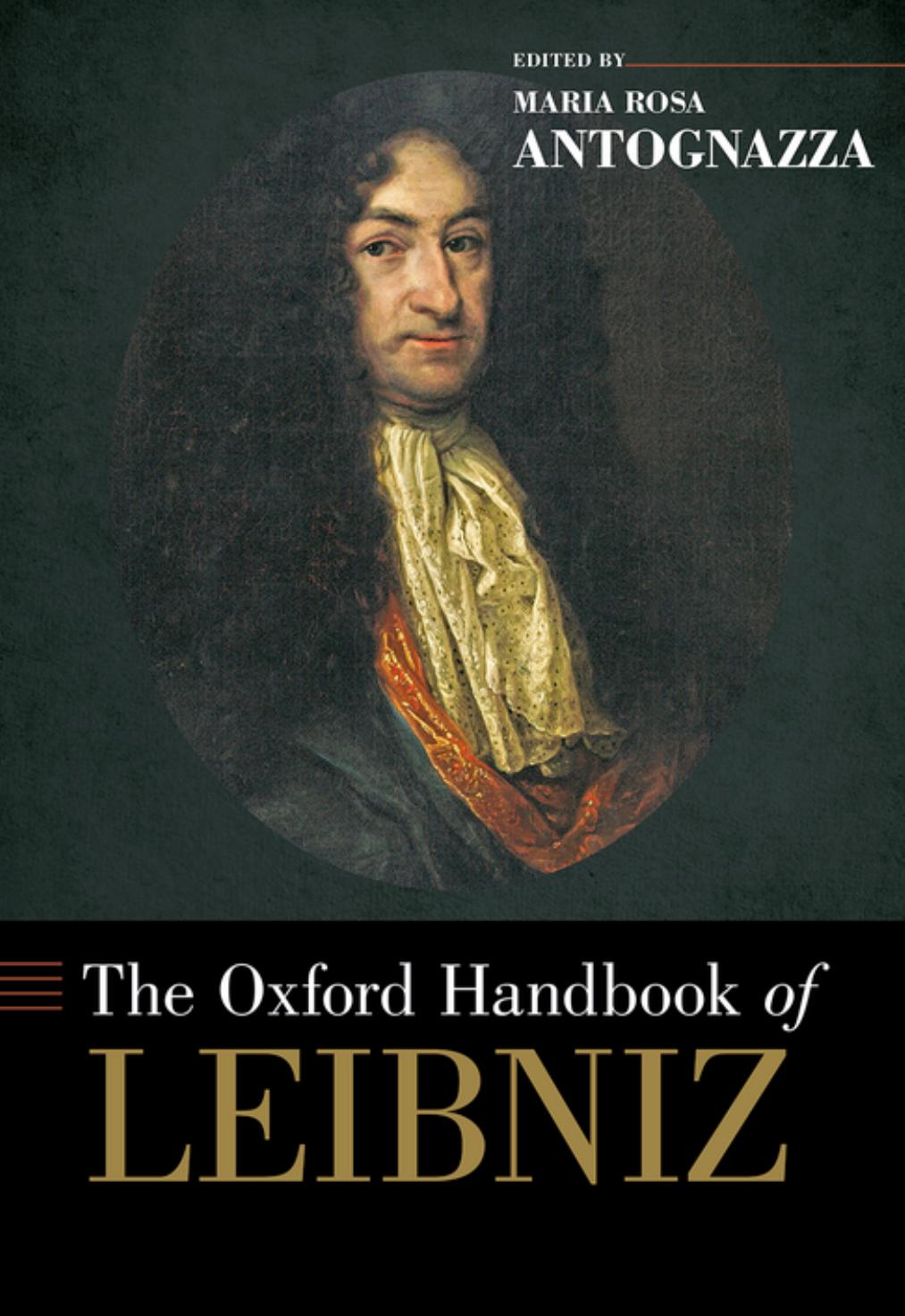The Oxford Handbook of Leibniz by Maria Rosa Antognazza

Author:Maria Rosa Antognazza
Language: eng
Format: epub, pdf
Publisher: Oxford University Press
Published: 2018-02-15T00:00:00+00:00
PRE-ESTABLISHED HARMONY AND SOUL-BODY UNITY
Although pre-established harmony explains the apparent interaction of soul and body, I will argue that it does not explain how soul and body together constitute an unum per se, although it does explain union in another sense. Before we can address this issue, however, we must consider whether and to what extent Leibniz is committed to the unity of soul-body composites in the first place.
There is an ongoing controversy in the literature concerning Leibnizâs commitment to corporeal substances. Daniel Garber has suggested that Leibnizâs basic ontological commitments change dramatically between what he calls the âMiddle Yearsâ (roughly 1680â1700) and the âMature Periodâ (roughly 1700â16).13 (There is also controversy about where to draw the dividing lines between the different periods of Leibnizâs thought, although nothing I say here turns on the particular dates I have chosen.) Garberâs contention is that, in the Middle Years, Leibniz is committed to bona fide corporeal substances, composites of soul and body that have true, substantial unity, and that these corporeal substances are the basic constituents of reality. Later on, this commitment disappears and the fundamental constituents of reality come to be simple, partless, active substances, which Leibniz calls âmonads.â However, others, Robert Adams and Robert Sleigh to cite two canonical sources, argue that Leibnizâs commitment to simple substances is already implicit in his views during the so-called Middle Years.14 That the commitment to simple substances comes to take center stage does not, therefore, betray a radical change of mind on Leibnizâs part, but instead is just the natural development of his implicit commitments or maybe just an original commitment being made explicit. A third option worth noting, which has been highlighted by some of the recent literature on this topic, is that, even during the Mature Period, Leibniz uses the language of corporeal (or sometimes composite) substance.15 This suggests that the shift between corporeal substances and monads may not be primarily a developmental shift. Perhaps a better way to understand what is going on is to think of Leibniz as wrestling with different conceptions of substance throughout his entire career. I do not aim to settle this issue here, but merely to keep it in view while considering Leibnizâs engagement with the question of soul-body unity.
This dispute has clear implications for the topic of soul-body unity because, if Leibniz was always a monadologist, it is possible that he never took seriously the view that soul and body together make up an unum per se. If this is correct, any search for Leibnizâs account of soul-body unity will be in vain. I cannot definitively rule this option out. Nevertheless, it is undeniable that there are texts in which Leibniz at least seems to characterize soul-body composites, the human being in particular, as per se unities.16 For this reason, it seems worthwhile to look for an account.
A good place to start the search is with pre-established harmony itself. A prima facie reason to think pre-established harmony is a good candidate is that Leibniz often presents pre-established harmony as an account of soul-body union.
Download
The Oxford Handbook of Leibniz by Maria Rosa Antognazza.pdf
This site does not store any files on its server. We only index and link to content provided by other sites. Please contact the content providers to delete copyright contents if any and email us, we'll remove relevant links or contents immediately.
| Administration & Medicine Economics | Allied Health Professions |
| Basic Sciences | Dentistry |
| History | Medical Informatics |
| Medicine | Nursing |
| Pharmacology | Psychology |
| Research | Veterinary Medicine |
Machine Learning at Scale with H2O by Gregory Keys | David Whiting(4167)
Fairy Tale by Stephen King(3216)
Will by Will Smith(2788)
Hooked: A Dark, Contemporary Romance (Never After Series) by Emily McIntire(2495)
Rationality by Steven Pinker(2290)
Friends, Lovers, and the Big Terrible Thing by Matthew Perry(2116)
The Becoming by Nora Roberts(2085)
Love on the Brain by Ali Hazelwood(1962)
The Strength In Our Scars by Bianca Sparacino(1776)
HBR's 10 Must Reads 2022 by Harvard Business Review(1776)
A Short History of War by Jeremy Black(1758)
Leviathan Falls (The Expanse Book 9) by James S. A. Corey(1646)
515945210 by Unknown(1597)
A Game of Thrones (The Illustrated Edition) by George R. R. Martin(1585)
Bewilderment by Richard Powers(1535)
443319537 by Unknown(1465)
The 1619 Project by Unknown(1381)
The Real Anthony Fauci: Bill Gates, Big Pharma, and the Global War on Democracy and Public Health (Childrenâs Health Defense) by Robert F. Kennedy(1366)
Fear No Evil by James Patterson(1277)
